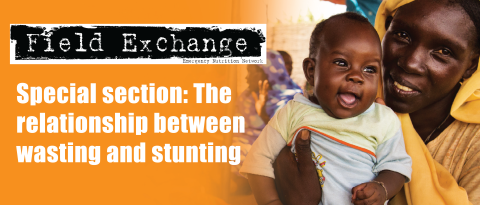Evaluation of community-based management of acute malnutrition in Yemen
This is a summary of the following report: UNICEF (2022) Evaluation of community-based management of acute malnutrition in Yemen.
Background
In Yemen, nearly 3 million children under five years of age suffered from acute malnutrition in 2021, of whom 500,000 suffered from severe acute malnutrition (SAM). The community-based management of acute malnutrition (CMAM) approach was introduced in Yemen in 2008, implemented exclusively through health facilities. Implementation modalities have since been diversified by the Government of Yemen (GoY) and partners, putting 3,923 outpatient therapeutic programmes (OTPs) and 24,000 community health volunteers (CHVs) in place by 2019. The CMAM programme is implemented in 22 governorates of Yemen across four components: (1) community outreach; 2) the management of SAM without complications through OTPs; (3) the management of SAM with complications through therapeutic feeding centres (TFCs); and (4) the management of moderate acute malnutrition (MAM) through therapeutic supplementary feeding programmes (TSFPs). This report presents the findings from a formative evaluation of the CMAM programme.
Methods
The independent evaluation was conducted between May 2021 and January 2022 using quantitative and qualitative data, predominantly from secondary sources. This was supplemented with primary data from 19 key informant interviews with stakeholders from organisations including UNICEF, the World Health Organization, the World Food Programme, Yemen’s Ministry of Population & Public Health (MoPHP) and 24 community interviews with mothers, caregivers and health workers.
Results
- Relevance: Programme relevance was demonstrated by the fact that the outcomes overlapped with those in MoPHP sectoral policies and plans and national CMAM guidelines. However, national guidelines were inconsistent with global CMAM standards. While the programme had many relevant targets, some underlying causes of malnutrition, such as widespread poverty and inadequate family planning, were not addressed.
- Efficiency: The programme was under-funded in 2020 and faced human resource shortages and supply chain disruptions. While coordination and knowledge transfer mechanisms were available at national and sub-national levels through the Nutrition Cluster and CMAM Technical Working Group, operational inefficiencies occurred due to limited engagement by key stakeholders (e.g., government representatives), an ad hoc approach to cluster meetings and a narrow focus in discussions.
- Effectiveness: The scale-up of the CMAM programme contributed to high cure rates (2019: 85% for OTPs, 91% for TFCs, 86% TSFPs; 2020: 87% for OTPs, 93% for TFCs, 90% for TSFPs) and low defaulter rates (2019: 12% for OTPs, 6% for TFCs, 12% TSFPs; 2020: 10% for OTPs, 5% for TFCs, 4% for TSFPs). A total of 35,000 health workers were trained in 2019, enabling the expansion of services. However, programme achievements were inconsistent at sub-national level, affected by the number of available facilities, the quality of human resources, the availability of supplies, coordination mechanisms and community engagement. Programme monitoring had also been limited by a lack of uniformity in indicators, recording and reporting tools and inadequate staff availability and capacities.
- Sustainability: Currently, the GoY is not in a position to sustain CMAM activities, remaining dependent on development partners due to inadequacies in public funds and limited technical and operational capacities.
- Gender equality: Gender equality principles had been partially integrated through targeting both boys and girls and pregnant and lactating women and mothers, recruiting female CHVs and gender-disaggregating the collection and reporting of data. However, gender gaps in staffing remain, particularly within OTP services and senior government roles.
- Equity: The programme was partially consistent with equity principles, prioritising underserved/remote populations through community outreach, incentivising service users and delivering indiscriminate services. However, the programme design was not informed by a systematic equity assessment and there was no explicit focus on people/families with disabilities.
Conclusion
This evaluation highlighted the continued need for the CMAM programme in Yemen. However, areas requiring attention include updating national CMAM guidelines to reflect global guidelines, advocating for greater political and financial commitment from the GoY and ensuring that essential documents are completed and robust and reliable monitoring data is available. Specific recommendations to guide the continuation and improvement of the programme are outlined in the report.


